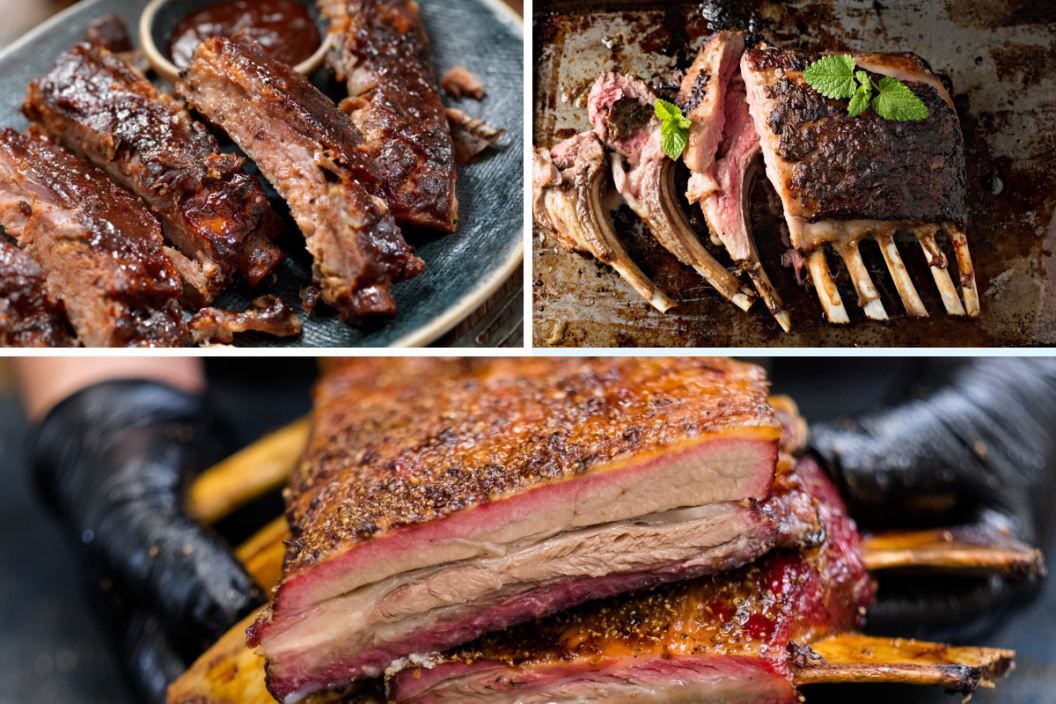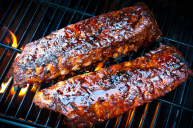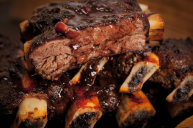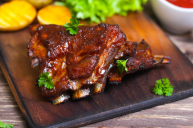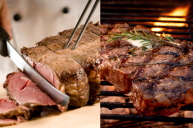When butchers, chefs, and avid at-home grillers talk about a "rack of ribs", they're referring to a slab of meat from the rib area of an animal that contains numerous individual rib bones. "Racks" can be extracted from cows, pigs, or lambs, and each type of rack includes a different number of ribs. Here, we're breaking down the amount of ribs that you can expect from beef rib racks, pork rib racks, and lamb rib racks, along with a few helpful tips to help you buy the best possible rack for your grilling and smoking adventures.
Videos by Wide Open Country
Beef Ribs
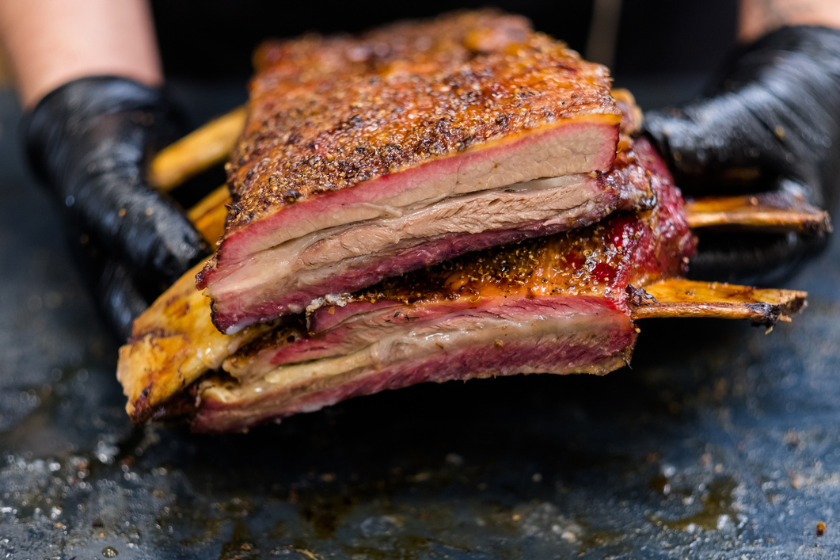
iStock/Getty Images
If you're ready to settle in for a big rib-cooking project, then you can't get much bigger than beef ribs. "The beef ribs, otherwise known as the beef plate, is a massive piece of meat and can come off as intimidatingly huge. A full rack of beef ribs [weighs] upwards of 15 pounds (think Flintstone-sized)," says chef and butcher Tony Sudak of Walden Local Meat.
According to Charleston-based chef Blair Machado (formerly of The Park Cafe), "A cow's full rack of ribs contains about 9-10 ribs." Beef ribs can also be sold in sections-the "back ribs" come from the cow's upper back, while "short ribs" come from the lower chest area of the rib cage. A butcher can trim these rib cuts to different thickness levels, with thicker ribs requiring a longer cook time.
Pork Ribs
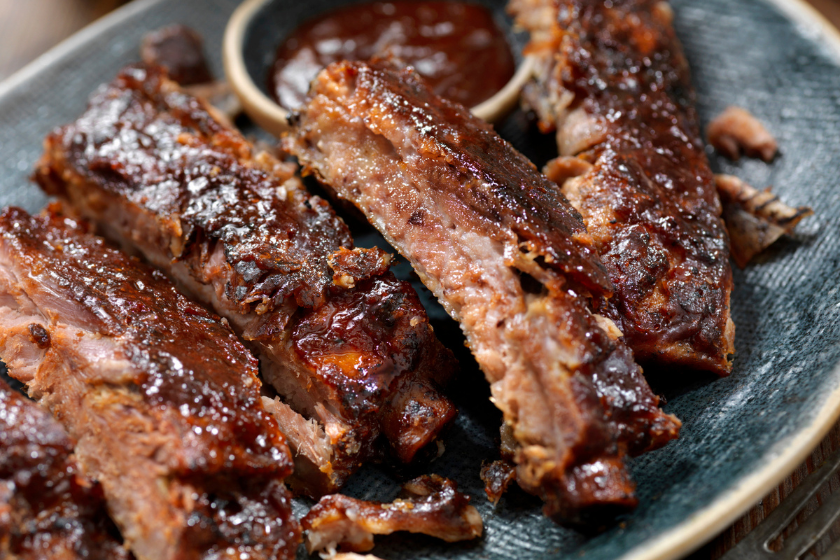
iStock/Getty Images
Pork ribs are traditionally sold in two different styles: the spare ribs (which come from the lower breast bone) and baby back ribs (which come from the pig's upper spine). "The spare ribs on a pig sit on the belly of the animal and are generally tougher than the baby back ribs. The baby back ribs are the bones that are on a bone-in pork chop; these are much more tender than spare ribs and are also arguably less flavorful," explains Sudak.
A rack of spare ribs generally includes 10-13 ribs, depending on the trimming style that the butcher uses. When purchasing baby back ribs, expect to receive 14-16 ribs.
Lamb Ribs
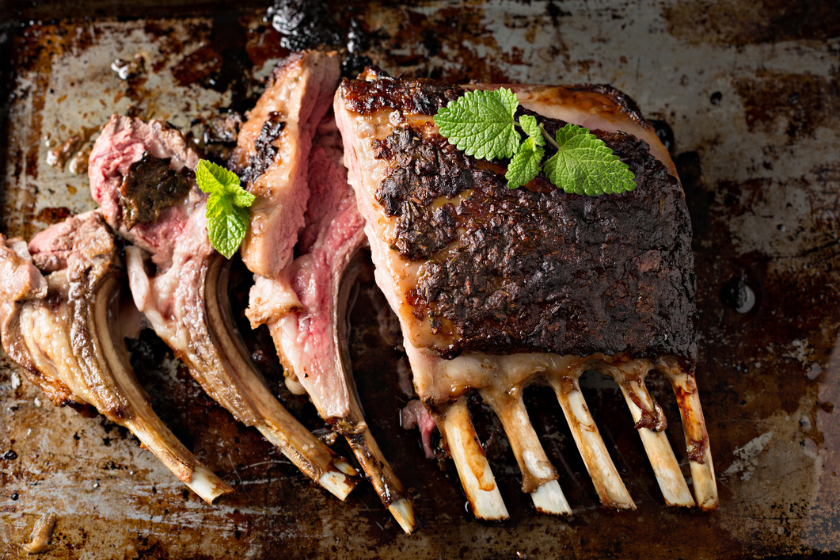
iStock/Getty Images
If you're in the market for quick-cooking ribs, then lamb ribs are a good choice. "Out of the three animals [that ribs typically come from], the lamb ribs will cook the fastest. That being said, they could be the rarest to find," says Sudak.
As with the other ribs on this list, the exact number of ribs that come in a lamb rack can vary depending on the butchery. "Speaking specifically to what we do at Walden Local Butcher Shop, we leave the belly attached to the rib plate to give a little more substance to the ribs. In general, there will be around 8 ribs per side for lamb ribs That number is dependent upon where the butcher splits the animal. As a general rule, [the split] is usually between the fifth and sixth ribs," Sudak continues.
What should you look for when buying a rack of ribs?
The best place to purchase a rack of beef, pork, or lamb ribs is a reputable and knowledgable butcher shop or counter, where professional butchers can guide you through the shopping process by asking about your cooking goals, your serving plans, and how much time and effort you're prepared to invest. That said, it helps to remember a few key signs of a high-quality rack of ribs so that you can ensure that you're getting your money's worth.
Executive chef Matt Fisher of The Porch in New York City shares the characteristics that he looks for when shopping for rib racks: "The meat should have a deep, rich, and bright appearance; [it shouldn't be] dull or faded in color. The fat ribbons should be milky white in color and should be plentiful. No bones should be visible on top of where the meat should be. We call those, 'shiners', and they [can cause] the meat to shrink even more on the bone as it cooks. Therefore, you are paying for more bone and less meat."
